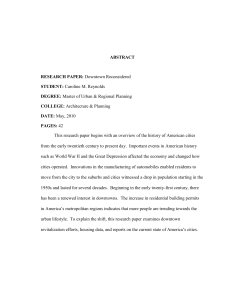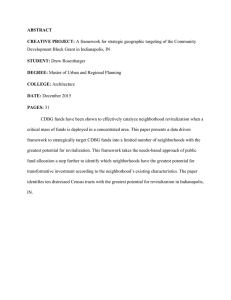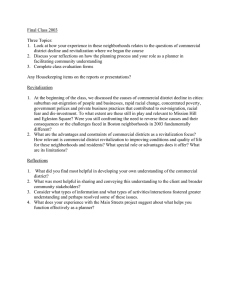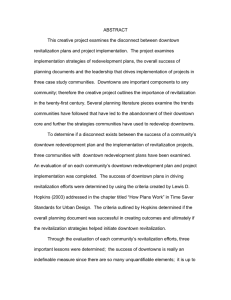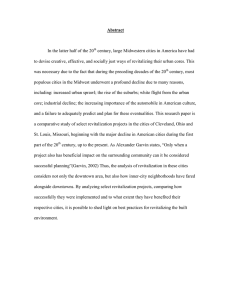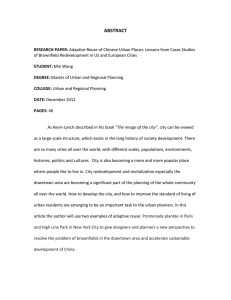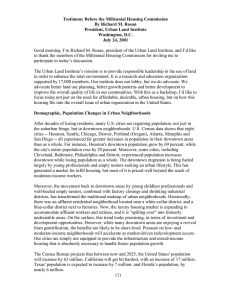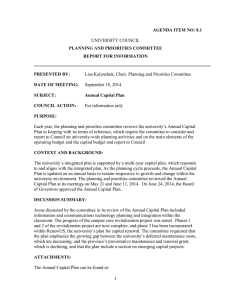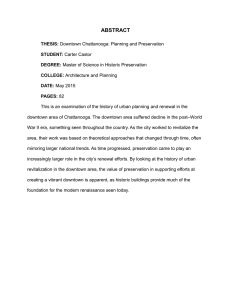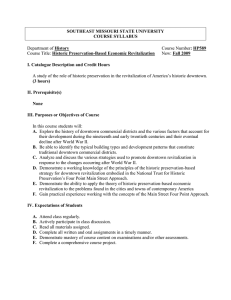Urban Studies 250: Urban Planning Tuesdays & Thursdays, 1:30-2:45 pm
advertisement
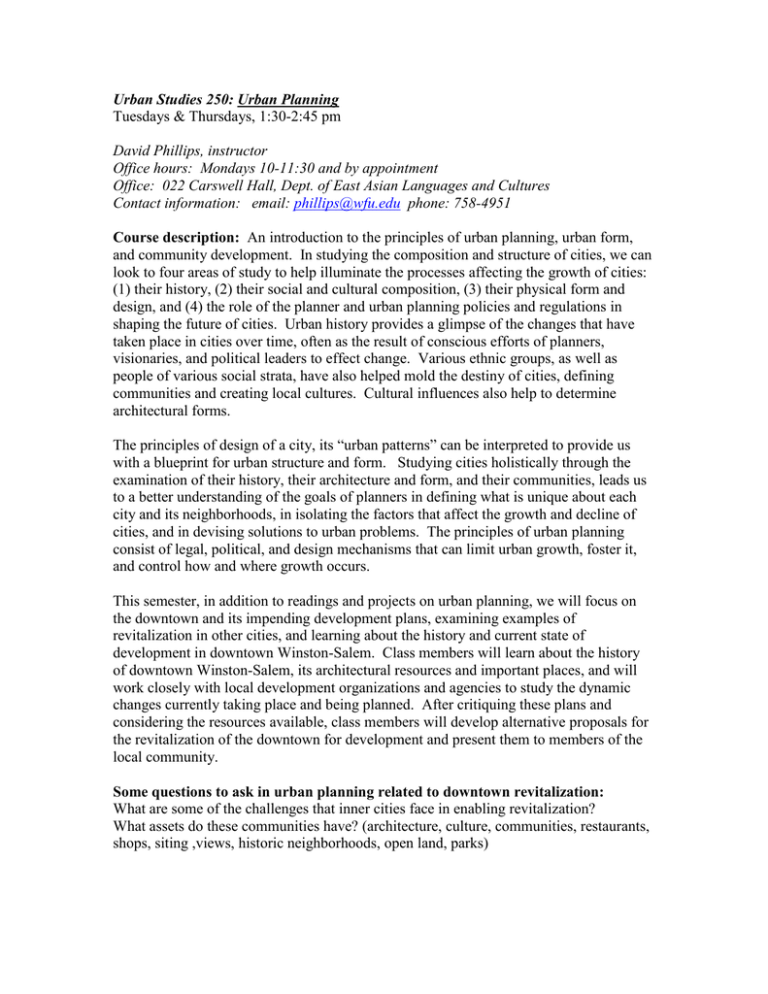
Urban Studies 250: Urban Planning Tuesdays & Thursdays, 1:30-2:45 pm David Phillips, instructor Office hours: Mondays 10-11:30 and by appointment Office: 022 Carswell Hall, Dept. of East Asian Languages and Cultures Contact information: email: phillips@wfu.edu phone: 758-4951 Course description: An introduction to the principles of urban planning, urban form, and community development. In studying the composition and structure of cities, we can look to four areas of study to help illuminate the processes affecting the growth of cities: (1) their history, (2) their social and cultural composition, (3) their physical form and design, and (4) the role of the planner and urban planning policies and regulations in shaping the future of cities. Urban history provides a glimpse of the changes that have taken place in cities over time, often as the result of conscious efforts of planners, visionaries, and political leaders to effect change. Various ethnic groups, as well as people of various social strata, have also helped mold the destiny of cities, defining communities and creating local cultures. Cultural influences also help to determine architectural forms. The principles of design of a city, its “urban patterns” can be interpreted to provide us with a blueprint for urban structure and form. Studying cities holistically through the examination of their history, their architecture and form, and their communities, leads us to a better understanding of the goals of planners in defining what is unique about each city and its neighborhoods, in isolating the factors that affect the growth and decline of cities, and in devising solutions to urban problems. The principles of urban planning consist of legal, political, and design mechanisms that can limit urban growth, foster it, and control how and where growth occurs. This semester, in addition to readings and projects on urban planning, we will focus on the downtown and its impending development plans, examining examples of revitalization in other cities, and learning about the history and current state of development in downtown Winston-Salem. Class members will learn about the history of downtown Winston-Salem, its architectural resources and important places, and will work closely with local development organizations and agencies to study the dynamic changes currently taking place and being planned. After critiquing these plans and considering the resources available, class members will develop alternative proposals for the revitalization of the downtown for development and present them to members of the local community. Some questions to ask in urban planning related to downtown revitalization: What are some of the challenges that inner cities face in enabling revitalization? What assets do these communities have? (architecture, culture, communities, restaurants, shops, siting ,views, historic neighborhoods, open land, parks) 2 How can the private sector help facilitate the role of revitalization, and what are the goals of the Downtown Development Partnership? What is the role of local government and the Planning Department? Why is a well-organized effort important? How can a master plan be helpful in establishing revitalization goals? What are some long-term goals? What opportunities can be identified in considering options for development? What is the role of transportation and infrastructure? How will the plans for revitalization include links to residential neighborhoods? What are the options for brownfield development? What role does the Piedmont Triad Regional Park (PTRP) play in revitalization plans? Required readings: (Please note: The textbooks are not currently available at the Bookstore. I will notify class members when the books are ready to be picked up.) Kelbaugh, Douglas S. Common Place Revisited: Repairing the American Metropolis. Garvin, Alexander. The American City: What Works, What Doesn’t. Barnett, Jonathan. Redesigning Cities: Principles, Practice, Implementation. Goldsteen, Joel and Cecil Elliott. Designing America: Creating Urban Identity. Selected readings: Bunnell, Gene. Making Places Special: Stories of Real Places Made Better by Planning Kelbaugh, Douglas S. Common Place Revisited: Repairing the American Metropolis. Grade components: Attendance and participation 15% Short Essays 20% Quizzes and HW 20% Short presentations 5% Term project 20% Term paper 20% Course project: Our term project for the course will be the creation of plans for the revitalization of downtown Winston Salem. Course schedule: Bi-weekly reading lists will be assigned, with new reading lists distributed at least one week in advance. Readings will average 60-75 pages per class. Reading schedule for January 10-19: Jan. 10 No readings Film viewing in class / class discussion Jan 12 Urban Design (pdf file) / class assignment Jan. 17 Garvin, Ch. 1, “A Realistic Aproach to City and Urban Planning” and Ch. 2, “Ingredients of Success” 3 Jan. 19 Goldsteen and Elliott, Ch. 3, “History—Traditions of City Spaces in America”
